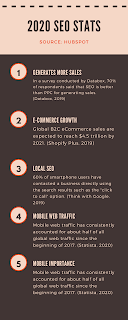Top 5 important metrics you NEED to track for Top Of The Funnel
Using a traditional Sales Funnel can be a good way for any small business to create an effective strategy where the goal is leading their target market down the funnel, from prospects, to interested observers and finally, to conversions and repeat customers.
We should be filling up this sales funnel over and over again, so that new prospects are constantly being generated. The purpose of this is to convert them to leads and, ultimately, sales, sign-ups or subscriptions. By ignoring the Top of the Funnel (TOFU) and only focussing on the later stages, we can find ourselves running out of customers to focus on; anyone who wants to buy from us already has!
So what important goals and metrics should we as SMEs focus on achieving when measuring the Top of the Sales Funnel?
If we're aiming to keep our Sales funnel constantly refreshed, then it makes sense that our most important Goal at this stage would be to Acquire New Visitors to our site, or in the case of an app, new Users.
The most crucial metric we'll need to track to have an indication of performance for this goal is a measurement of New Visitors. If we're using Google Analytics on our site (and we should be!) then the New Users metrics is what we'll want to focus on here. This is a measurement of people who've never been to our site before (according to the Google tracking code!) A constant stream of New Visitors is a good indication that not only is our business growing but also that our marketing efforts like Search Engine Optimisation and Google Ads are working in driving people to our site or app.
To expand on that, we could also track New Visitors by Content. This metric indicates exactly what is driving new visitors to our site. This can be really important if we're running any sort of Content Marketing, Local SEO or Social Media Marketing campaigns. This can also help us determine what efforts we should focus on for future campaigns designed to acquire new visitors.
Another key metric for TOFU analysis is Direct Visit Count. If we're talking about Google Analytics, direct traffic is any visits to your site that reached us by typing our URL directly into their browser, or by clicking a bookmark they have maged. Why would we want to track these vistors? These are usually considered VERY high-quality traffic, as they're people who are aware of our website and more likely to convert! [1]
A second Goal at the TOFU stage is to Segment New Visitors into different groups. This could be based on demographics, geographic details, devices types or any other number of things we can track in Google Analytics. Why would we want to Segment our new visitors? By creating Retargeting lists, we can effectively Retarget these prospects and turn them into leads! This is an opportunity to develop an email retargeting campaign.
The final metric we're going to track as an SME is our Content Bounce Rate. Google Analytics classes a Bounce [2] as a session on our site or landing pages in which users viewed only a single page and then left. Why exactly would we want to track this? Well, if we're focussing on acquiring new users for our Sales Funnel, identifying content or landing pages that are driving users away can help us better optimise this content with the aim of retaining these users!
[1] Torkildson, A., 2021. What Type Of Online Traffic Converts the Best? | SEO.com. [online] SEO.com. Available at: <https://www.seo.com/blog/what-type-of-online-traffic-converts-the-best/> [Accessed 20 April 2021].
[2] Support.google.com. 2021. Bounce rate - Analytics Help. [online] Available at: <https://support.google.com/analytics/answer/1009409?hl=en> [Accessed 20 April 2021].



Great article, Julian! Small business owners sometimes focus so much on establishing a relationship with their existing clients that they forgot the top of the funnel. To keep the top of the funnel active and never running out of customers to focus on, small businesses should make sure their website is optimized for search engines. After analyzing those critical metrics, they should invest heavily in inbound marketing activities like blogs, pillar pages, social media. It is also important that small business has a clear strategy how they’re going to transform those websites visitors in new clients with their lead magnets and email campaigns.
ReplyDelete